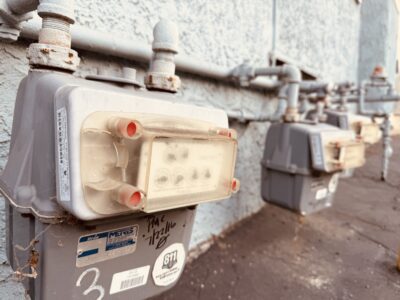Breathless in Bombay Redux: Corruption and Environmental Law
As I mentioned a few days ago, Bombay has 55,000 taxicabs that all run on CNG. (And as I updated, the municipal buses do, too — something else that India does better than the United States.).
But Bombay’s taxis present India-watchers and scholars with something of a problem: if you believe the standard story about India, this simply shouldn’t be happening.
Talk to anyone about governance in this country, and the first word you will hear will be “corruption.” India is notoriously corrupt. Transparency International regularly lists it as extremely corrupt, and journalists regularly decry the infamous corruption of its bureaucracy, its police force, its politicians — everyone. Do yourself a favor and read Arvind Adiga’s spectacular new Booker Prize-winning novel The White Tiger: in it, he details the myriad ways in which Indians bribe officials to get around the rules.
But if that is the case, how did we get to a point where 55,000 taxicabs actually retrofitted their engines when the law said that they were supposed to? And make no mistake: they did. Every time I got into a cab, I asked the driver to see the CNG cylinder. There it was. Typically cynical Indians all tell me that the cabs are following the law.
Auto fuel compliance figures to be a pretty easy thing to buy your way out of. It’s easy to buy regular gasoline in Bombay, so all you have to do is bribe the local police officer to get out of the retrofit. And it’s not as if someone in the car next to you will know that you are still using gasoline.
What’s going on? How can one of the most corrupt countries on the planet suddenly be transformed into Switzerland?
Perhaps it’s because the rule is local and its impacts are local, so citizens feel a much greater stake in enforcing it and following it. That does not bode well for effective climate change regulation in the developing world.
In any event, answer the question and you might be able to see a way to the drastic improvement of governance generally and environmental governance in particular.
Reader Comments
5 Replies to “Breathless in Bombay Redux: Corruption and Environmental Law”
Comments are closed.







On my last visit to Mumbai I was beyond amazed at the success of the CNG implementation….and my lungs were certainly grateful too.
Of course that means that there is no place for bags in the trunk, and must be balanced precariously on the roof of the cab tied down:)…a small price to pay for the ability to breathe.
Thanks for your comment! Any idea of why you think it has been implemented so effectively? What went right? India is not known for effective implementation of laws.
Dear Jonathan,
Compressed natural gas is normally cheaper (on a BTU basis) than gasoline, especially in some developing countries. This may explain the effective implementation of CNG motor fuel in India.
Jim–
But then why wouldn’t they have done it earlier, without any governent regulatory push? Is your theory that government regulation is effective in getting regulated industries to comply for fixed costs if the eventual marginal cost will be lower? Interesting; I’m wondering what the literature says on this.
And I’m not sure what it means for something to be cheaper on a BTU basis. Does that mean that an auto can go farther on an equivalent amount of CNG than it can on gasoline?
Jonathan
Jonathan,
Compressed Natural Gas and propane have been widely used as motor fuels in developing countries for decades because these fuels are cheaper and more available. I doubt that taxicabs in India actually “retrofitted” their vehicles in response to a government environmental policy.
BTU is an abbreviation for “British Thermal Unit” which is a measure of the heat content in fuel (BTUs are also used to quantify heat in the atmosphere). The efficiency of a vehicle engine is based on how may BTUs are consumed to travel a certain distance, regardless of the fuel source.
Liquid fuels such as gasoline have more BTUs per unit of volume than gaseous fuels such a natural gas. This means that a tank of liquid fuel holds more BTUs that a tank of gaseous fuel, so liquid fuel vehicles have more range.
CNG is a good motor fuel, but it has a short range and requires frequent refills. The CNG fuel tank is a heavy duty pressure vessel that is heavier than a liquid fuel tank and adds weight to the vehicle.